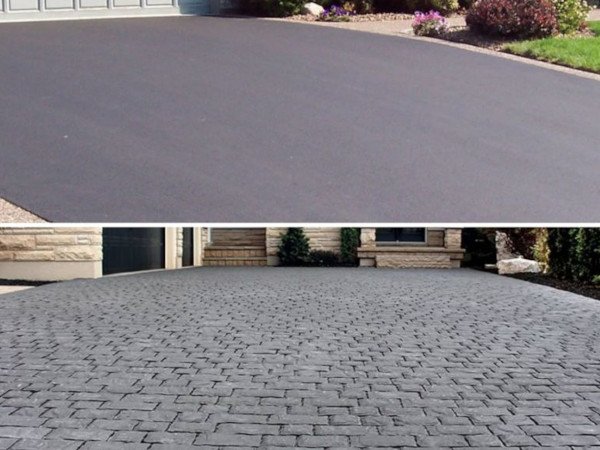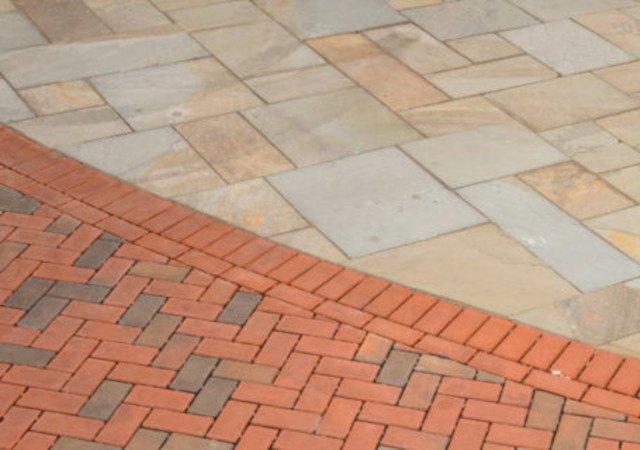Stamped Concrete Vs Paver Stones

Stamped concrete and paver stones are popular choices for creating visually appealing and durable outdoor surfaces, each with its own set of characteristics and considerations. Here’s a comparison between stamped concrete and paver stones to help you make an informed decision based on your specific needs:
Stamped Concrete:
Advantages:
- Cost-Effective:
- Stamped concrete is often more cost-effective than paver stones, providing an affordable alternative with a similar appearance.
- Versatility:
- Stamped concrete can mimic the look of various materials, including brick, stone, and slate, offering a wide range of design options.
- Smooth Surface:
- Stamped concrete provides a smooth and continuous surface, making it suitable for activities like walking and outdoor events.
- Quick Installation:
- Stamped concrete installations are typically faster than laying individual paver stones, saving both time and labor costs.
- Seamless Appearance:
- Stamped concrete can create the appearance of a seamless surface without the joints inherent in paver installations.
Disadvantages:
- Cracking:
- Stamped concrete is prone to cracking, especially in areas with freeze-thaw cycles or unstable soil conditions.
- Repair Challenges:
- Repairing cracked or damaged stamped concrete may involve more complex and less seamless repairs compared to pavers.
- Limited Aesthetics:
- While stamped concrete offers a variety of patterns, the aesthetic range may not match the diversity provided by individual paver stones.
- Color Fading:
- Over time, the color of stamped concrete may fade, especially in areas with heavy sun exposure.
- Heat Absorption:
- Stamped concrete can absorb and retain heat, potentially making the surface hot in warm weather.
Paver Stones:
Advantages:
- Aesthetic Variety:
- Paver stones come in a wide range of colors, shapes, and patterns, allowing for diverse design options that may be more customizable than stamped concrete.
- Durability:
- Paver stones are highly durable and resistant to cracking, making them suitable for high-traffic areas.
- Repairability:
- If a paver stone is damaged, it can be easily replaced without affecting the surrounding area, offering a cost-effective repair option.
- Flexibility:
- Pavers are flexible and can adjust to minor ground movement without cracking.
- Permeability:
- Permeable pavers allow water to pass through, reducing runoff and helping with water drainage.
Disadvantages:
- Cost:
- Paver stone installations are often more expensive than stamped concrete installations.
- Installation Time:
- Installing paver stones can be more time-consuming, especially for intricate designs.
- Weed Growth:
- The joints between paver stones may allow for weed growth if not properly maintained.
- Surface Unevenness:
- In some cases, the surface of paver installations may be uneven, making it less suitable for certain activities.
- Maintenance:
- While pavers are easy to repair, they may require more regular maintenance, including joint sand replacement and weed control.
Conclusion:
The choice between stamped concrete and paver stones depends on your priorities, budget, and the specific requirements of your project. Stamped concrete provides a cost-effective and versatile option with a smooth surface, while paver stones offer greater aesthetic variety, durability, and repairability. Consider factors such as climate, design preferences, and long-term maintenance when making your decision. Additionally, consulting with a paving professional can provide valuable insights based on your specific needs.




